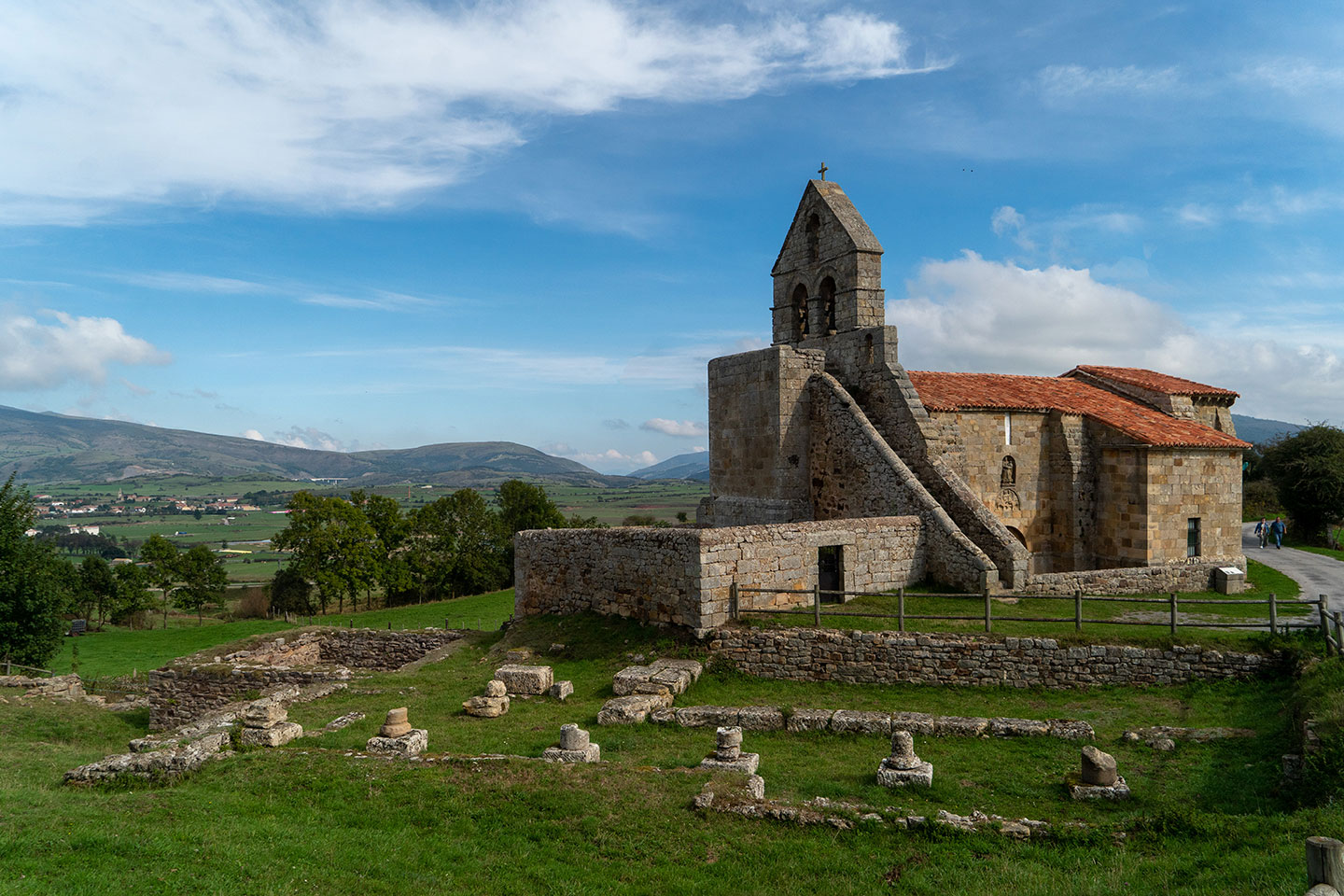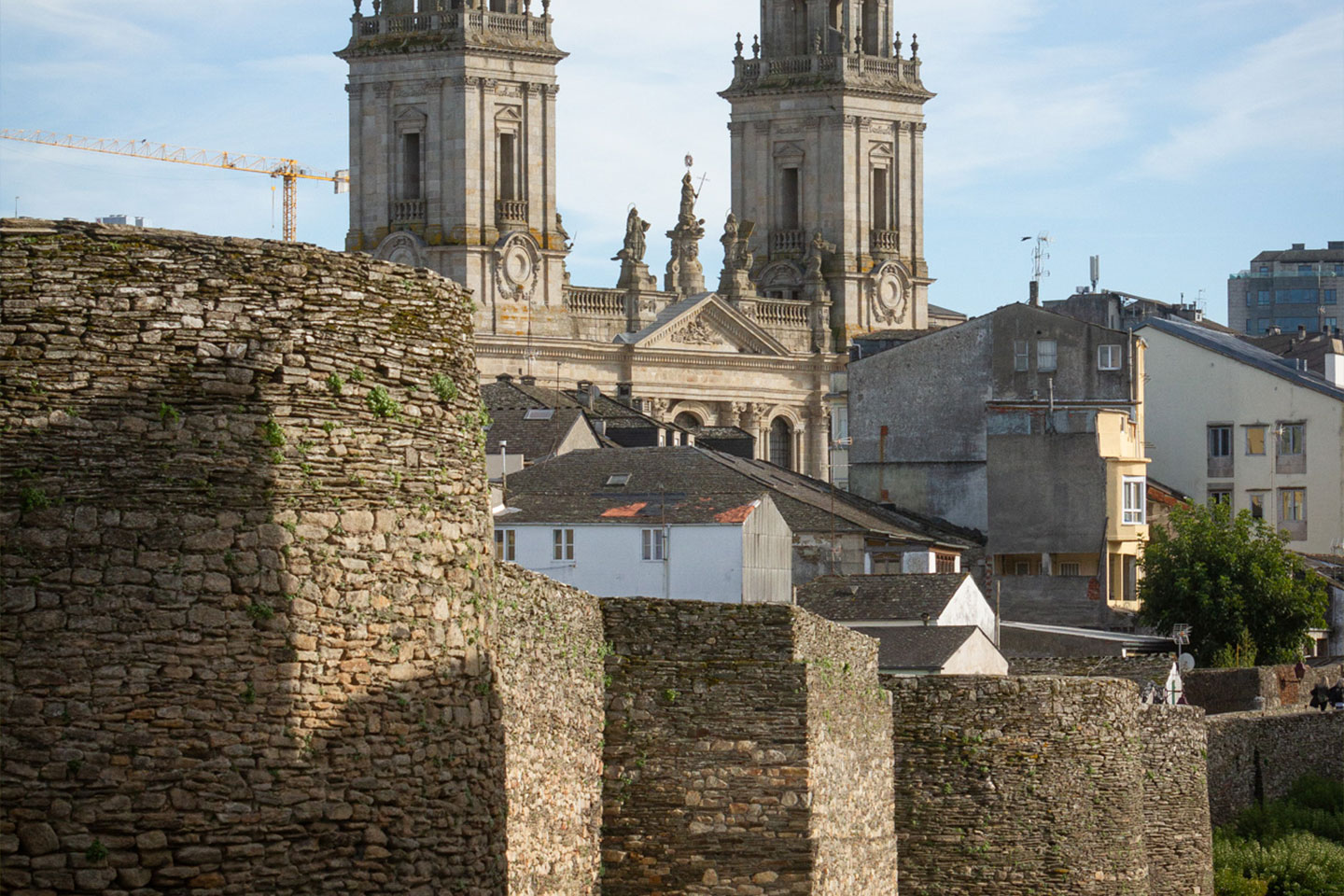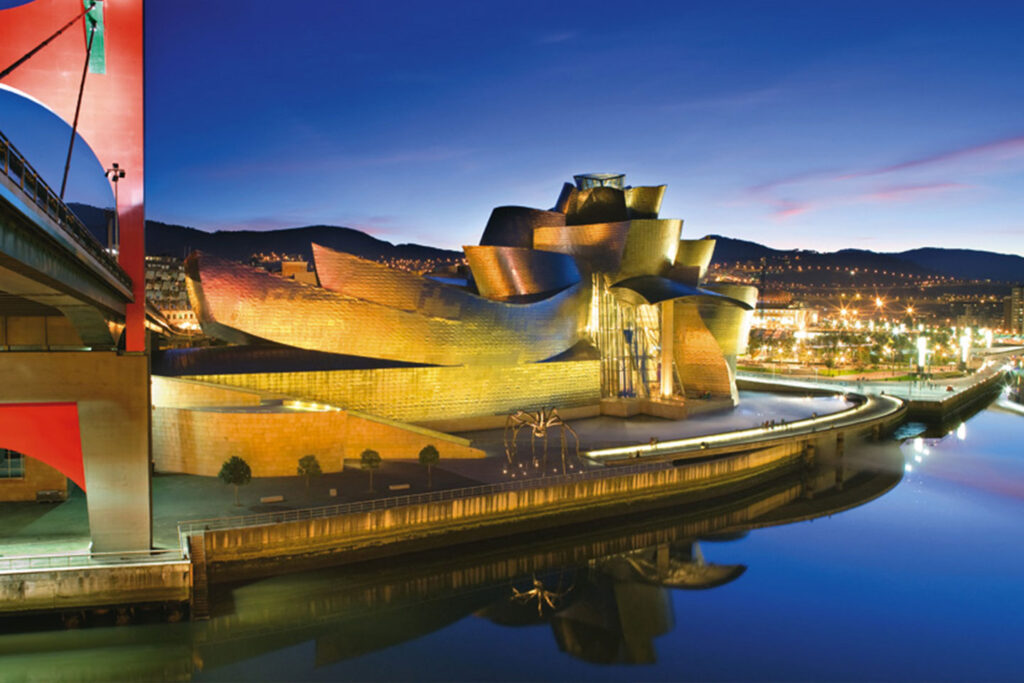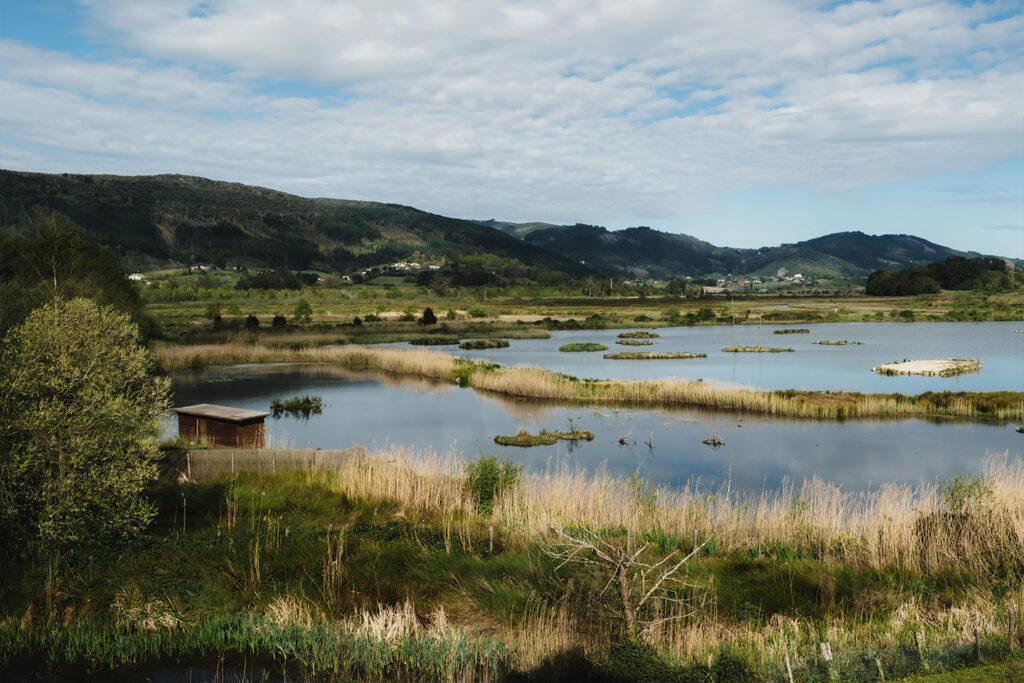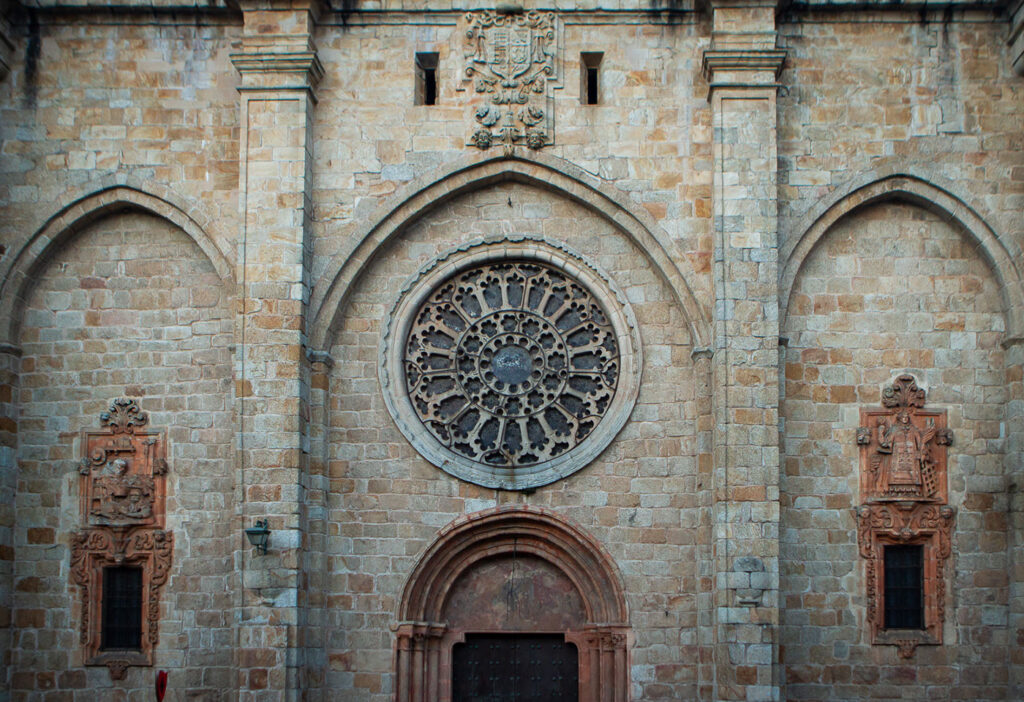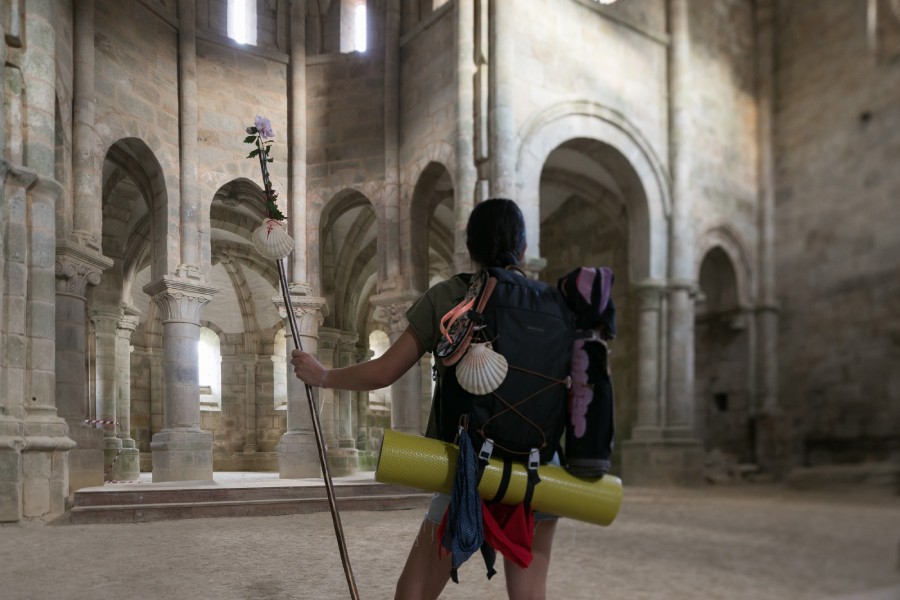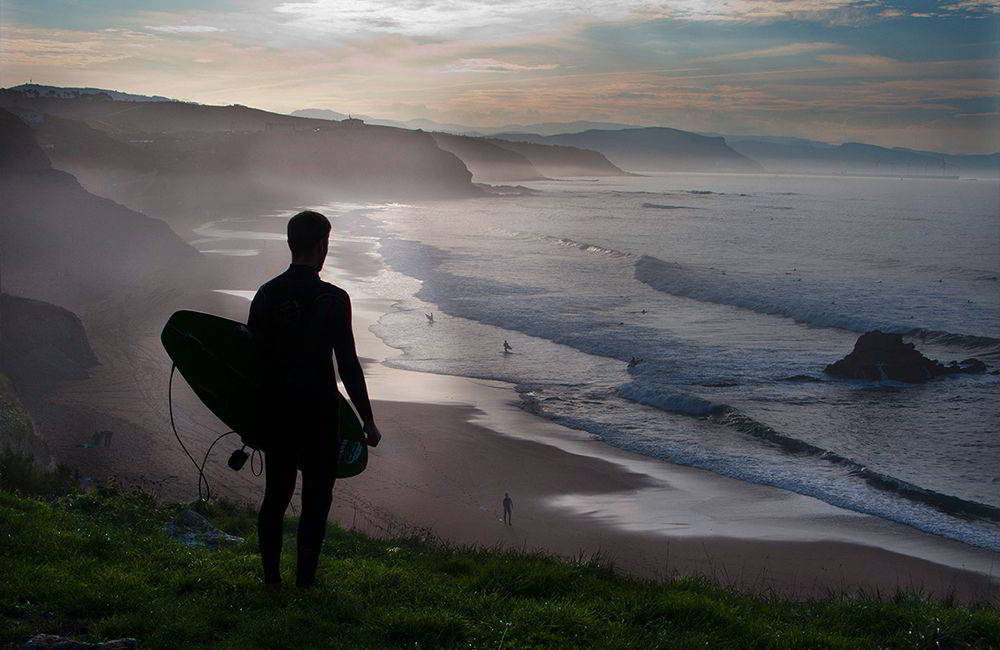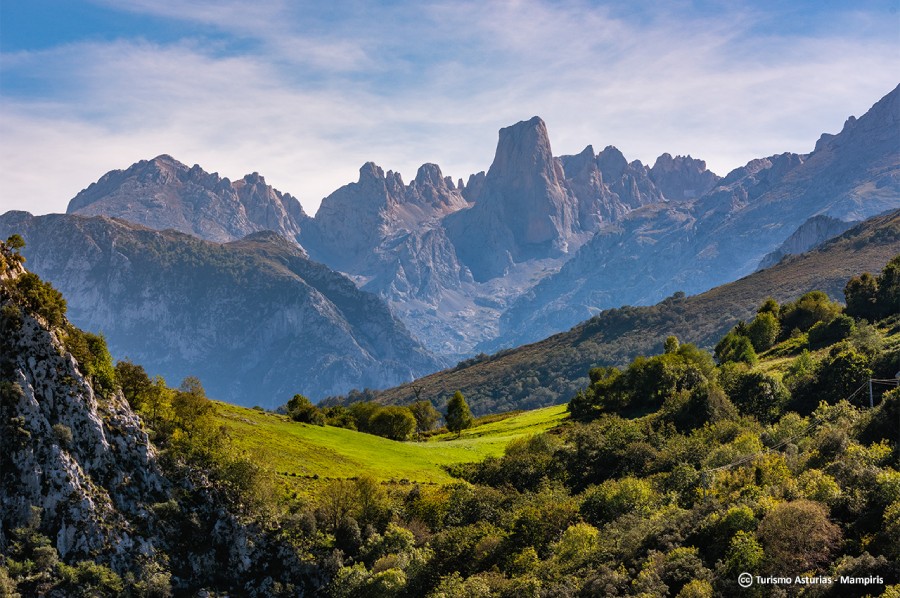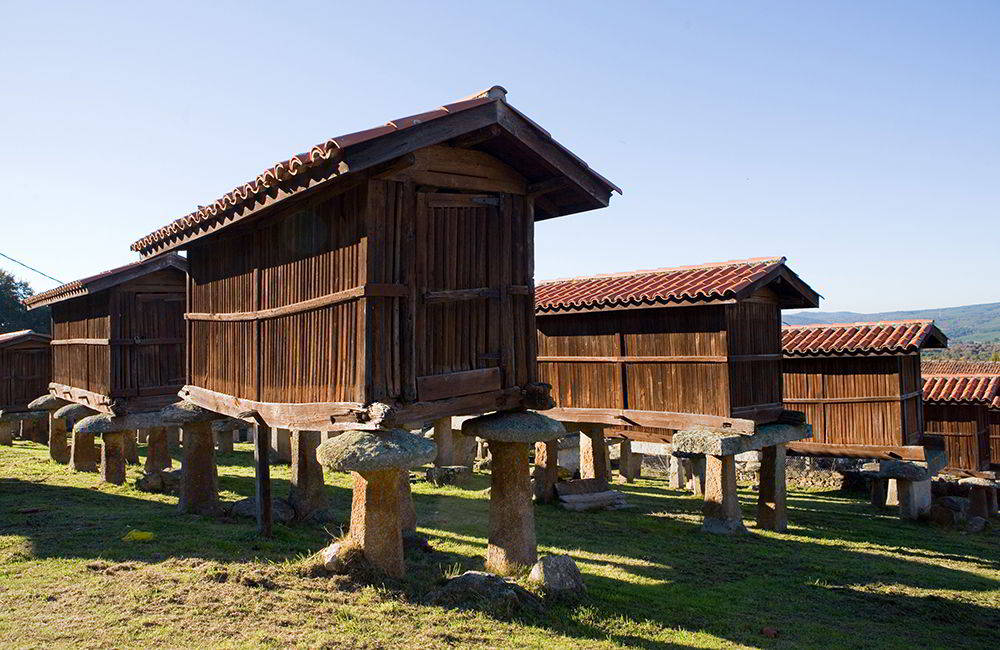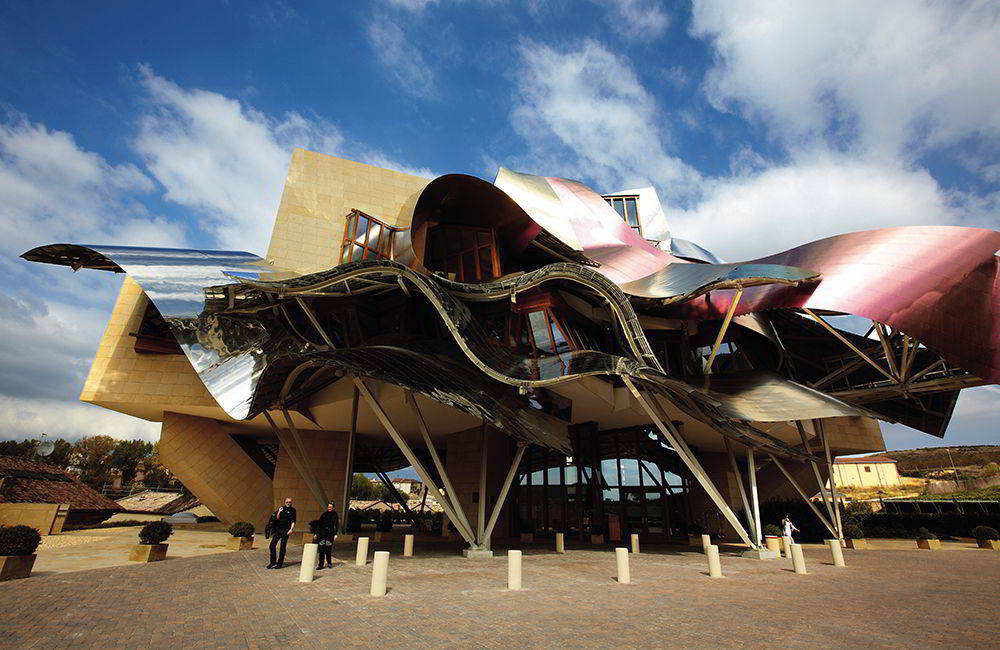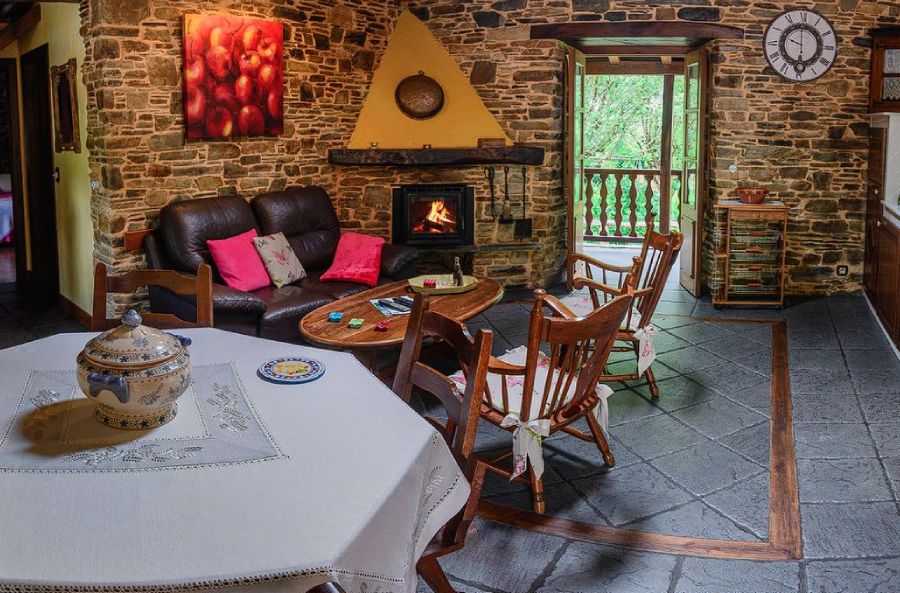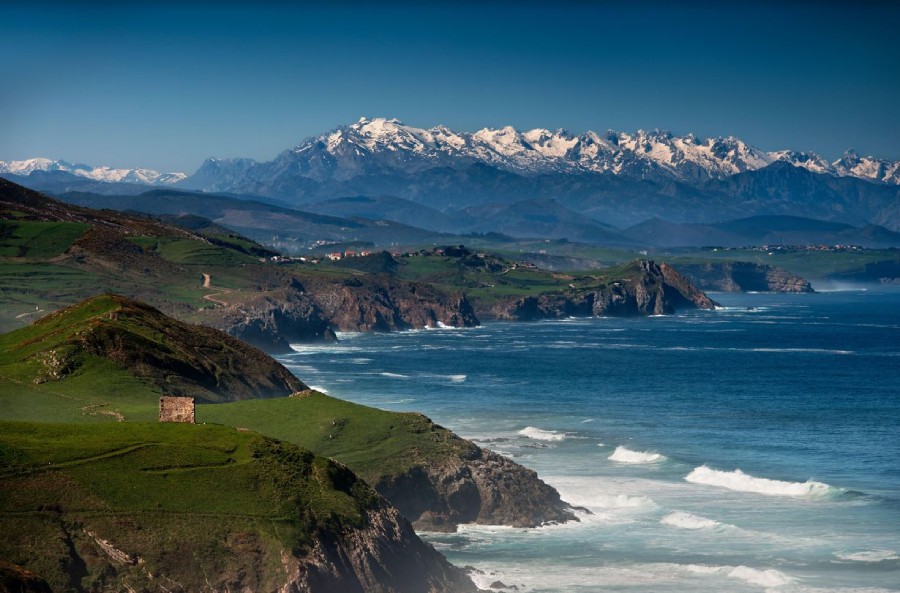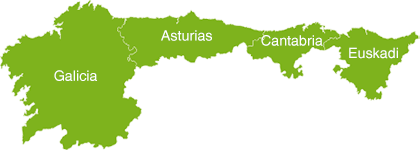It was Obelix who repeated, again and again, in the Asterix albums the phrase “These Romans are crazy!”. Were they really? We believe not. Otherwise, it cannot be explained that they chose more than privileged spaces of Green Spain to set up their camps and cities. Even in the 21st century their traces are visible and visitable: it is still possible to discover the secrets of the port city of Oiasso, the reason for being of the mountainous Juliobriga, the inviting baths by the sea in Gijón or the best-preserved Roman wall in the world, in Lugo. Obelix was wrong: they were not crazy.
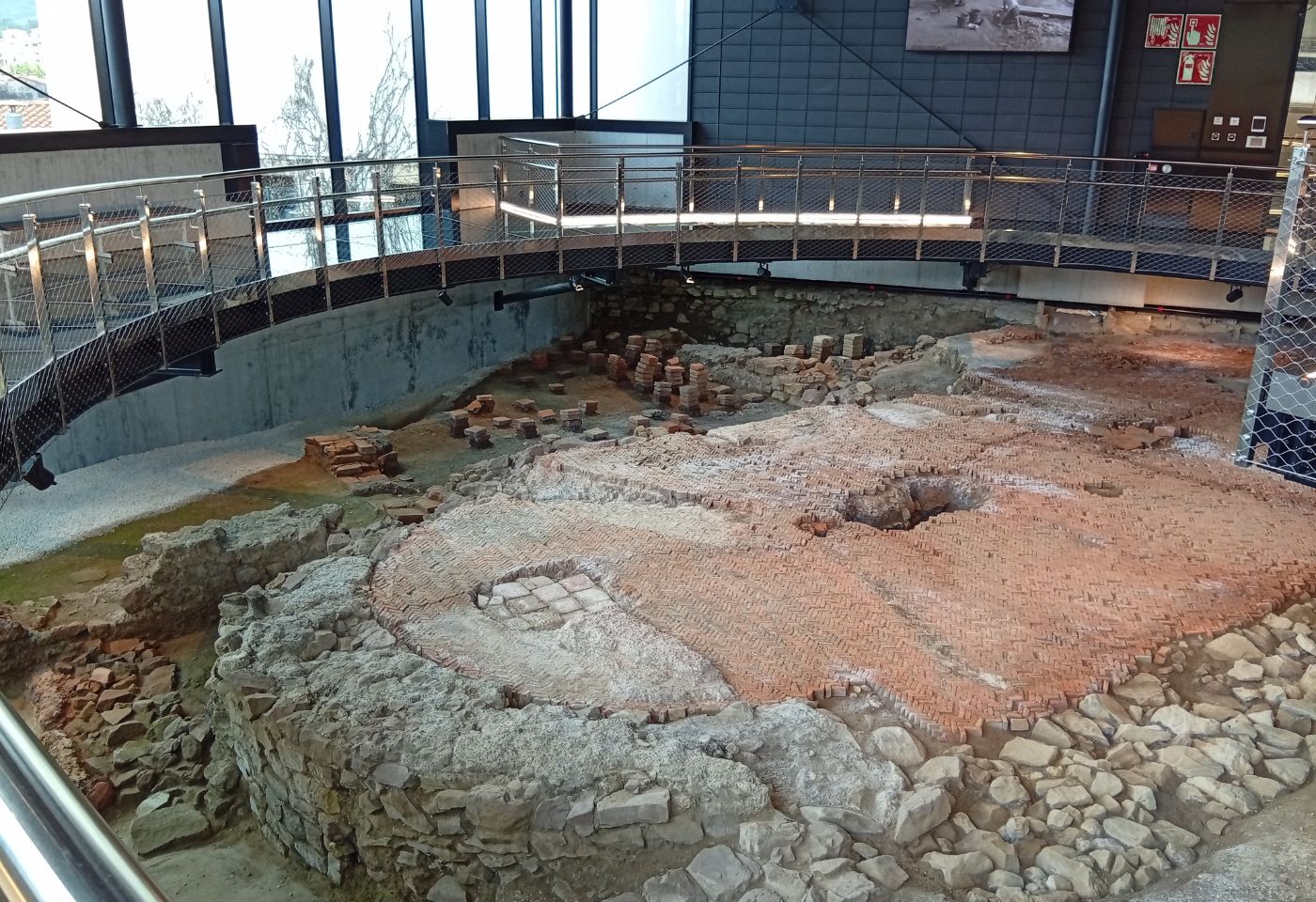
Oiasso in Irun, Gipuzkoa (Euskadi)
What is Oiasso?
Oiasso is the name that the Romans gave to the port city that was located on the land where the current Irun stands. Ancient Oiasso benefited from a privileged geography: a harbour sheltered from the Cantabrian Sea, bathed by the waters of the Bidasoa River and very close to the mining complex of Arditurri which the Romans would also exploit. Oiasso is also the name given to the archaeological museum in Irun that gathers, studies and exhibits the Roman-era remains found in the area.
Why did the Romans settle in Irun?
The location could not have been better: Irun was (and still is) a strategic crossroads of routes between Hispania and Gaul, an unsurpassable access to the sea via the Bay of Txingudi and, to cap it all, rich veins of iron and other minerals in the surroundings. A territory that combined trade, mining and territorial control was a treat too attractive for the ambitious Romans.
What is the best Roman experience in the area?
The Oiasso Museum organizes guided tours to the baths, to the mining surroundings and to the singular Necropolis of Santa Elena, a simple hermitage that hides inside the funerary secrets of the inhabitants of Oiasso. It is worth timing the visit to coincide with the Dies Oiassonis Festival, a celebration that evokes Irun’s Roman past with historical re-enactments, theatre, culinary competitions, markets and other shows.
And a travel tip that the Romans could not enjoy?
A boat trip along the Bidasoa estuary and the Bay of Txingudi, discovering the ancient Roman coastline and one or two unique curiosities such as Pheasant Island, the smallest condominium in the world What does that mean? That Spain and France share its sovereignty: during the first six months of the year, France assumes its administration and during the following six, Spain.
Juliobriga in Retortillo, Campoo de Enmedio (Cantabria)
What is Juliobriga?
Juliobriga was the most important city of all those founded by the Romans in Cantabria: the ‘fortified city of Julius’ (in reference to the emperor Cayo Julio César Augusto), a fundamental enclave created after the complicated Romanisation of the north of the Iberian Peninsula. The conquest of a large part of the current territories of Green Spain was not an easy undertaking for the Romans: the so-called Cantabrian Wars, which took place in territories of Asturias and Cantabria, were the final act after decades fighting to achieve total control of the peninsula.
Why did the Romans settle in Cantabria?
The founding of Juliobriga was not, at all, casual since the Romans left few things to chance: Juliobriga is a strategic and symbolic enclave that sought to control access to Cantabria from the Meseta and to strengthen Latin power in the complicated northern territories. Juliobriga is located in the village of Retortillo, neighbouring Reinosa, in the mountainous south of Cantabria, in the comarca of Campoo de Enmedio and close to the banks of the Ebro shortly before it becomes the largest reservoir in northern Spain.
What is the best Roman experience in the area?
Visiting the archaeological site of Retortillo and the Domus Interpretation Centre is the closest thing there is to travelling to the first centuries of our era to learn about the urban layout of a Roman city, its public buildings, its dwellings (and those of the indigenous tribes) and other archaeological finds. The former offers a self-guided visit and shows, raw, the remains of the past. In the Interpretation Centre, Roman daily life is recreated and the finds are put into context.
And a travel tip that the Romans could not enjoy?
A getaway to the nearby Ebro reservoir to enjoy a kayak excursion or a long bike ride. Although the Romans mastered (also) hydraulic engineering, they were not the ones who created the Ebro reservoir, so this immense inland sea would be totally foreign to them.
\
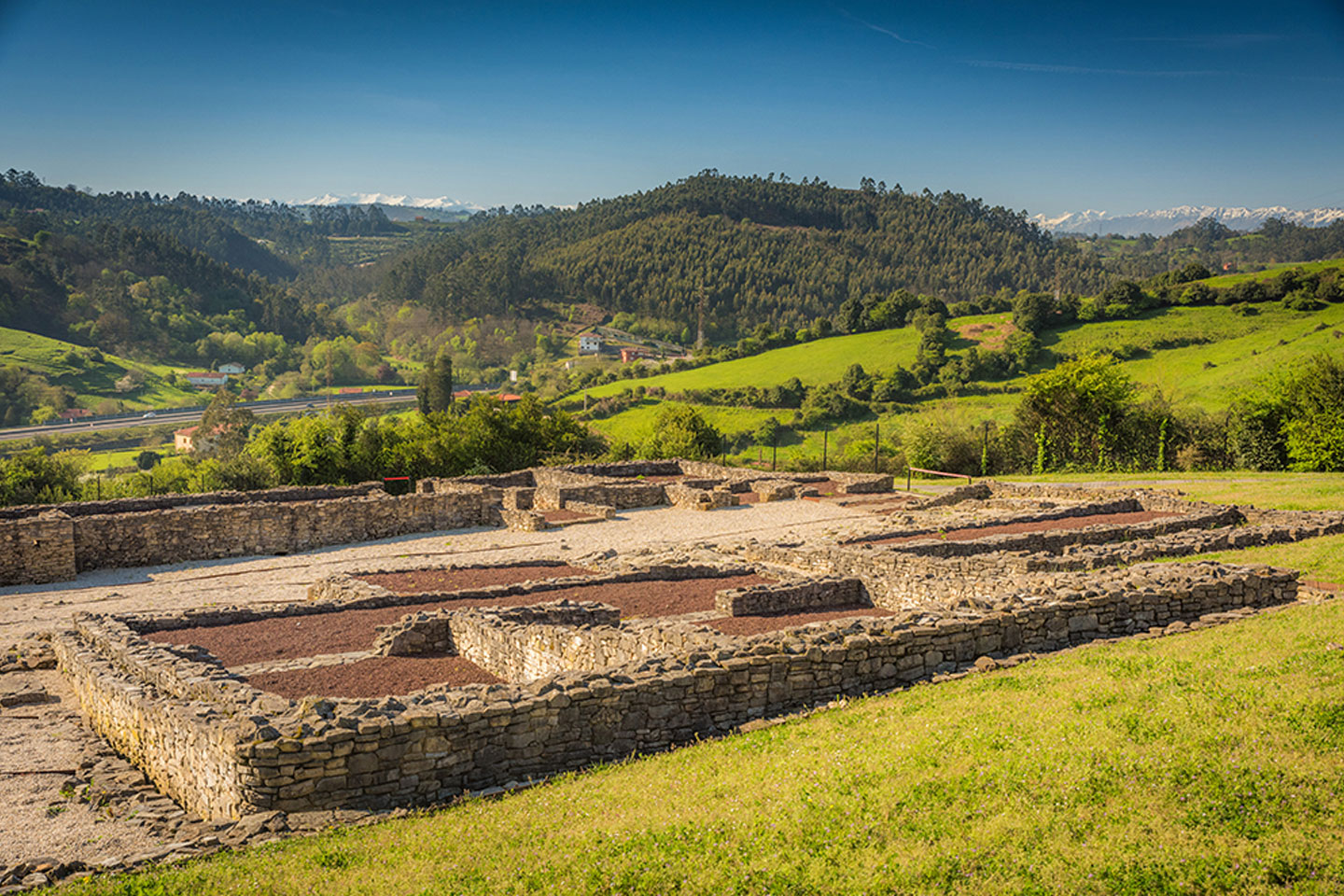
Roman Gijón (Asturias)
What is Roman Gijón?
It is the set of Roman remains found in the Asturian coastal town, concentrated mainly in the sites of the Archaeological Park of Campa Torres and the Roman Baths of Campo Valdés. Although the ancient Roman settlement in what is now Cimavilla did not reach the scale of other great cities of the Empire in the Iberian Peninsula, it did play a prominent role at the regional level, serving as a link between the interior and the Asturian coast.
Why did the Romans settle in Gijón?
Both yesterday, in the times of Ancient Rome, and today, Gijón was a strategic point to control the northern coast and a natural harbour ideal for the traffic of goods and raw materials. Its proximity to the ancient Vía de la Plata, which linked the north and the south of the west of Hispania -from Augusta Emerita to Asturica Augusta-, gave it a double role: on the one hand, it was the end node of a historic route and, on the other, a naval connection point in the north of the peninsula.
What is the best Roman experience in the area?
Without a doubt, to walk through the Roman Baths of Campo Valdés, right next to San Lorenzo beach, to learn how the Romans relaxed (and, by the way, greet the iconic statue of the emperor Augustus). At the western end of Gijón lies the Archaeological-Natural Park of Campa Torres, an ancient pre-Roman and Roman hillfort settlement, the possible Oposum Noega that could be the origin of Gijón.
And a travel tip that the Romans could not enjoy?
Start a late stroll through the Cimavilla neighbourhood in search of a glass of well-poured cider and climb up to the hill of Santa Catalina to bid farewell to the day next to Eduardo Chillida’s gigantic (and Instagrammable) sculpture, Elogio del Horizonte.
Lucus Augusti in Lugo, Lugo (Galicia)
What is Lucus Augusti?
Lucus Augusti was the Roman capital of inland Gallaecia and today is known for preserving something that not even the Italians themselves have managed to keep: a complete Roman wall of more than two kilometres in length (2.266 metres to be a little more exact) that surrounds the historic centre of Lugo and its main monuments, all of them erected in the following centuries.
Why did the Romans settle in Lugo?
The area offered something that the Romans could not ignore: an ideal position to consolidate their dominion over the north-west of the peninsula. Like so many other Roman cities in the peninsula, the origins of Lugo were military: here the military camp commanded by Cayo Antistio Veto was erected in the year 25 BC.
What is the best Roman experience in the area?
Walking along the Roman wall, a World Heritage Site, is a unique experience on the planet. You can walk its more than 2 kilometres in length without leaving the original layout. And if you want more, visit the San Roque Archaeological Centre to learn what the funerary rituals of Rome’s subjects were like or go to the Roman baths next to the Miño River and neighbours of the bridge… Roman too, of course.
And a travel tip that the Romans could not enjoy?
Going out for tapas, as simple as that. The Romans may have been masters of the banquet, but there is no record that they indulged in the pleasures of going from bar to bar tasting tapas with each drink. Two very popular Lugo areas for tapas would be the Old Town itself located within the walls (Praza do Campo, Rúa Nova or Campo Castelo) or the surroundings of A Milagrosa square, outside the walls.
